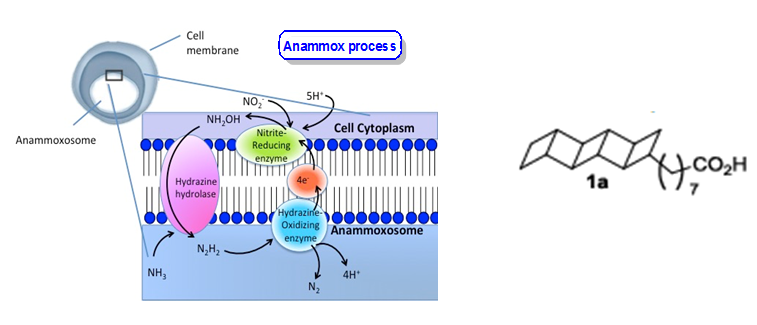 Intranet
IntranetAdvances in the study of the anammox process in marine environment, have shown that the latter was responsible of 30% of the production of dinitrogen gas by conversion of both ammonium and nitrite in the complete absence of oxygen. However, nothing is really known about the implication of the anammox process in the production of dinitrogen gas in continental ecosystems. The microorganisms involved in this process are part of the family of Planctomycetes bacteria. These unique bacteria contain a separated intracytoplasmic compartment called the anammoxosome, postulated as the site where the anammox reaction takes place. This dense barrier reduces the permeability of the membrane to toxic intermediate of the anammox reaction, like hydrazine. The wall of this organelle consists of unusual ladderane lipids, which are complex organic molecules comprising a sequence of three or five linearly fused cyclobutane rings (such as pentacycloanammoxic acid 1a). These compounds are specific of anammox bacteria and are thus biomarkers of the anammox process. This project proposes a more straightforward route to the total synthesis of ladderanes than the existing one. Based on theoretical calculations and X-Ray diffraction analysis, we propose a multiple [2+2] cycloaddition sequence that will reduce the number of steps. Having this molecule in hands will allow quantification of the anammox process in continental environments. Moreover, this molecule will also be useful in simulated diagenesis experiment to examine its fate upon fossilization.

Doctorant : Simon Guelen
Partenaires : Sylvie Derenne, Arnaud Huguet (METIS), Louis Fensterbank, Lise-Marie Chamoreau (IPCM UPMC), François Volatron (LCT UPMC)